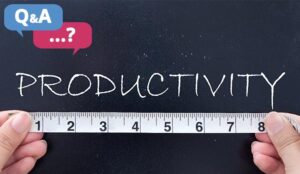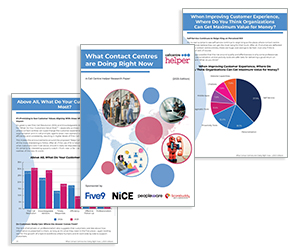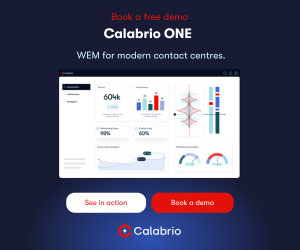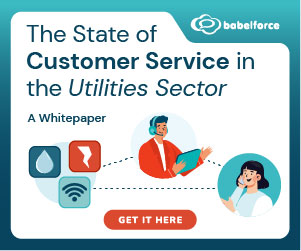This blog summarizes the key points from a recent article from David McGeough at Scorebuddy, where he breaks down 14 key call centre productivity metrics and shows how QA can help you improve each one. From cost per call to chat concurrency, you’ll learn where to focus and what to fix.
Hitting efficiency targets is a constant pressure, but it’s easy to overlook a powerful tool that’s hiding in plain sight, your QA program.
If you’re tracking key performance indicators (KPIs) like handle time, occupancy, or FCR, you’re already on the right path (and we don’t need to explain them to you). But without QA data, those numbers can’t tell you why performance is slipping or help you identify specific areas for agent improvement.
The solution: Align QA with productivity goals and make it a real driver for change, not just a report card.
What Are Contact Centre Productivity Metrics?
Contact centre productivity metrics provide measurable data that reveal how efficiently your team is operating. These indicators give insight into key aspects like:
- Agent performance
- Time management
- Workload distribution
Metrics such as Average Handle Time (AHT), occupancy rate, and agent utilization rate help teams understand operational efficiency and set realistic performance benchmarks.
They’re critical for evaluating agent productivity, managing costs, and ensuring customer service standards are being met. Without clear productivity KPIs, it’s hard to differentiate between agents being productive vs. just staying busy.
It’s also important to separate productivity metrics from quality ones:
- Productivity metrics – Track how much work is done and how fast.
- Quality metrics – Measure how well the work aligns with service and compliance standards.
Although quality assurance (QA) is often focused on customer experience, it also plays a major role in improving productivity by uncovering:
- Inefficient processes
- Coaching and training needs
- Workflow gaps
With the right QA strategy, you can turn these insights into practical improvements.
How QA Supports Productivity in Contact Centres
Quality assurance gives teams visibility into the customer service experience. Reviewing calls, chats, and other interactions allows QA analysts to identify what’s helping or hurting productivity at the agent level.
It pinpoints delays, identifies tools that aren’t working as they should, and highlights when agents need more support or better guidance.
This kind of insight helps streamline workflows, improve coaching effectiveness, and reduce repeat contacts, all key drivers of productivity. QA stops being reactive and becomes a tool for driving proactive performance improvements.
14 Essential Contact Centre Productivity Metrics & How QA Improves Each One
- Average Handling Time (AHT)
- First Contact Resolution (FCR)
- Contact Per Hour (CPH)
- After-Call Work (ACW)
- Cost per Call
- Response Time
- Agent Utilization Rate
- Chat Concurrency Efficiency
- Transfer Rate
- Occupancy Rate
- Call Abandonment Rate
- Service Level
- Schedule Adherence
- Queue Management Effectiveness
1. Average Handle Time
Formula: AHT = (Talk Time + Hold Time + After-Call Work Time) / Total Calls
AHT measures how long agents take to resolve interactions from start to finish. QA helps reduce AHT by identifying:
- Inefficient call flows
- Unnecessary hold times
- Script issues
This helps balance speed with service quality.
2. First Contact Resolution
Formula: FCR = (Resolved on First Contact / Total Contacts) – 100
FCR tracks how often agents solve issues on the first try. QA highlights missed discovery questions and follow-ups, helping improve FCR by addressing knowledge gaps and coaching needs.
3. Contacts Per Hour
Formula: Contacts Per Hour = Total Contacts Handled / Total Hours Worked
CPH gauges how many customer issues are handled per hour. QA helps increase this number by identifying repetitive tasks or bottlenecks limiting output and flagging coaching opportunities.
4. After-Call Work
Formula: After-Call Work = Total ACW Time / Total Calls
QA shows where time is being lost after calls and reveals manual processes or poor note-taking habits. These insights help reduce ACW through training or automation.
5. Cost Per Call
Formula: Cost Per Call = Total Operational Costs / Total Calls Handled
QA helps lower costs by revealing inefficiencies and process delays that make calls longer or more complex than necessary.
6. Response Time
Formula: Response Time = Total Wait Time / Total Interactions
QA can uncover what’s slowing agents down-whether it’s tool switching, unclear scripts, or poor multitasking skills-and help improve response time through coaching or tech fixes.
7. Agent Utilization Rate
Formula: Agent Utilization Rate = (Handle Time + ACW) / Logged-In Time – 100
QA identifies why some agents are underperforming during logged-in hours, whether due to burnout, lack of engagement, or system inefficiencies.
8. Chat Concurrency Efficiency
Formula: Chat Concurrency Efficiency = (Chats Handled / Chat Hours) – Avg Concurrent Chats
QA reveals where agents are struggling to multitask or dropping threads. Use these insights to coach agents or improve messaging workflows.
9. Transfer Rate
Formula: Transfer Rate = (Transferred Calls / Total Calls) – 100
QA reviews transferred calls to identify preventable escalations and training gaps, helping reduce unnecessary transfers.
10. Occupancy Rate
Formula: Occupancy Rate = (Talk Time + ACW) / (Talk Time + ACW + Idle Time) – 100
QA identifies what’s causing idle time-such as inefficient workflows or unclear expectations-and helps optimize workload balance.
11. Call Abandonment Rate
Formula: Call Abandon Rate = (Abandoned Calls / Total Incoming Calls) – 100
QA helps analyse why customers drop off, such as poor IVR design or long queue messages, and supports queue design improvements.
12. Service Level
Formula: Service Level = (Calls Answered Within Target / Total Calls) – 100
QA uncovers the root cause of service level failures, like long call durations or peak-time inefficiencies.
13. Schedule Adherence
Formula: Schedule Adherence = (Worked Time / Scheduled Time) – 100
QA explains deviations from the schedule, highlighting behavioural issues or morale problems that workforce management tools may miss.
14. Queue Management Effectiveness
Formula: No universal formula; based on routing, wait times, and transfers.
QA identifies misrouted calls, transfer delays, or uneven workloads, allowing teams to redesign queue rules and improve agent availability.
This blog post has been re-published by kind permission of Scorebuddy – View the Original Article
For more information about Scorebuddy - visit the Scorebuddy Website
Call Centre Helper is not responsible for the content of these guest blog posts. The opinions expressed in this article are those of the author, and do not necessarily reflect those of Call Centre Helper.
Author: Scorebuddy
Reviewed by: Megan Jones
Published On: 3rd Jul 2025
Read more about - Guest Blogs, David McGeough, Scorebuddy





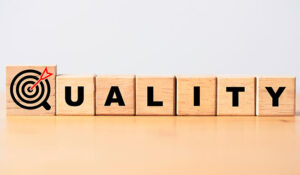
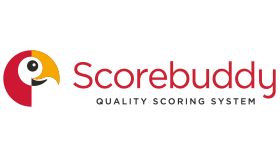 Scorebuddy is quality assurance solution for scoring customer service calls, emails and web chat. It is a dedicated, stand-alone staff scoring system based in the cloud, requiring no integration.
Scorebuddy is quality assurance solution for scoring customer service calls, emails and web chat. It is a dedicated, stand-alone staff scoring system based in the cloud, requiring no integration. 

